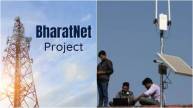~ Dr. Sophy K.J
Director, Centre for Labor Law Research and Advocacy
National Law University, Delhi
There is a lack of childcare systems in India beyond parental care, resulting in a disproportionate care burden borne by women (ILO, 2018); (Schochet, 2019); (Parker, 2015). Unpaid care work leads to ‘time poverty’ (ILO, 2018) and forces women to bear the dual responsibility of productive and reproductive labour (Nikore, 2022). The ‘motherhood penalty’ in the informal sector results in women accepting flexible, low-paying work or self-employment, impacting the well-being of mothers and children (Yu & Kuo, 2017). This paper discusses how existing and proposed Indian labour policies overlook the gender dynamics and double burden of childcare responsibilities placed on women.
The Proposed Four Labour Codes and Scope of Childcare
The Union Government introduced four labour codes in 2020 – Code on Wages, Industrial Relations Code, Code on Social Security, and Occupational Safety, Health & Working Conditions Code – to improve labour conditions. However, these codes primarily benefit formal and organized sector employees, neglecting unorganized workers, the majority of whom are women. The Code on Wages, 2019, prohibits gender discrimination in wages but falls short in addressing equity in promotions, recognizing reproductive labour, and protecting against stereotyping. The Code on Social Security, 2020, offers medical and maternity benefits but falls short of providing entitlements for unorganised workers. In conclusion, the Codes lack a vision for childcare as a means to support female economic participation and overlook ground realities like work fragmentation and casualization.
Critical Concerns
Childcare facilities
Provision of creches was first mandated under the Factories Act, of 1948, in establishments that employed more than 30 women. The OSH Code mandates the provision of crèche facilities only in establishments where 50 or more workers are employed. Childcare responsibilities often force women to leave the workforce (Stengel, 2023). Marginalized women in the informal sector are compelled to bring their children to work due to a lack of options. Investing in Early Childhood Care and Education (ECCE) is crucial for fostering long-term social and economic improvement while ensuring optimum cognitive and behavioural development.
Maternity leave
The Code on Social Security, 2020, provides maternity leave to 26 weeks, which is available for women in the organised sector. Maternity leave duration should balance women’s labour force participation vis-à-vis the child’s well-being. Research suggests an optimal maternity leave duration is 6 months to 2 years. Involvement of fathers via paternity leave promotes women’s economic participation (UNICEF, 2013). Recognizing the mental impact of pregnancy, such as post-partum depression (PPD), is crucial, and there is evidence linking paid maternity leave to lower rates of PPD (Van Niel M.S., 2020). However, in India, informal sector women lack access to even the 26-week leave, compelling them to work throughout pregnancy and immediately after delivery, negatively affecting maternal and child health, and economic security and sustainability (WHO, 2019). Section 60 of the Code on Social Security, 2020, provides for 12 weeks of maternity leave in case of taking or giving upon the adoption of a child below the age of 3 months, which is a step in the right direction but is inadequate as there is no maternity leave in case of adoption of older children or children via surrogacy. More the provisions on menstrual leave and hysterectomy leave are not covered in the Code on SS.
Provision of flexible work arrangements
Working parents need flexible working policies like work from home and part-time work. The SS Code allows women to work from home after they have availed maternity leave as per mutually agreeable terms. Such policies are required for both parents on a wider scale. In the UK, parents with children under the age of 6 have the right to ask for flexible working hours. (UNICEF, 2013)
Childcare leave for parents
Parents require childcare leave as children don’t give advance notice or wait for holidays to fall sick, and those with disabled children need the support of additional childcare leave. In Germany, each parent has the right to fully paid leave of 10 days a year to take care of a sick child. For single mothers, this leave is for 20 days. (UNICEF, 2013)
Recognition of unpaid housework
Feminists have argued for ‘wages for housework’ from 1970 onwards (McKeen, 1994). In India, most women are compelled to stay at home because of care work responsibilities. Unpaid care work goes unrecognised and unevaluated. Chapter IX, of the SS Code discusses the formulation of schemes for unorganised sector workers by the Central Government – Homemakers should be recognised under the same.
Conclusion
Recognising and accommodating women’s needs has a crucial bearing on economic welfare. It would allow 151 million able and willing female workers to enter the workforce and contribute to the economy (Ethiraj, 2021). Childcare systems need to be envisioned and integrated with labour policies to encourage more women to enter the workforce. That will bring more skill to the production sphere and increase the quality of livelihood of families. The social security provided by the State must be institutionalised including those in the informal sector. ECCE-based programmes need to be recognised as part of the empowerment measure for all workers. Full-day, reliable and affordable public childcare systems must be provided for all workers.
(The views expressed by the author are personal in nature and do not represent the views of News24)










